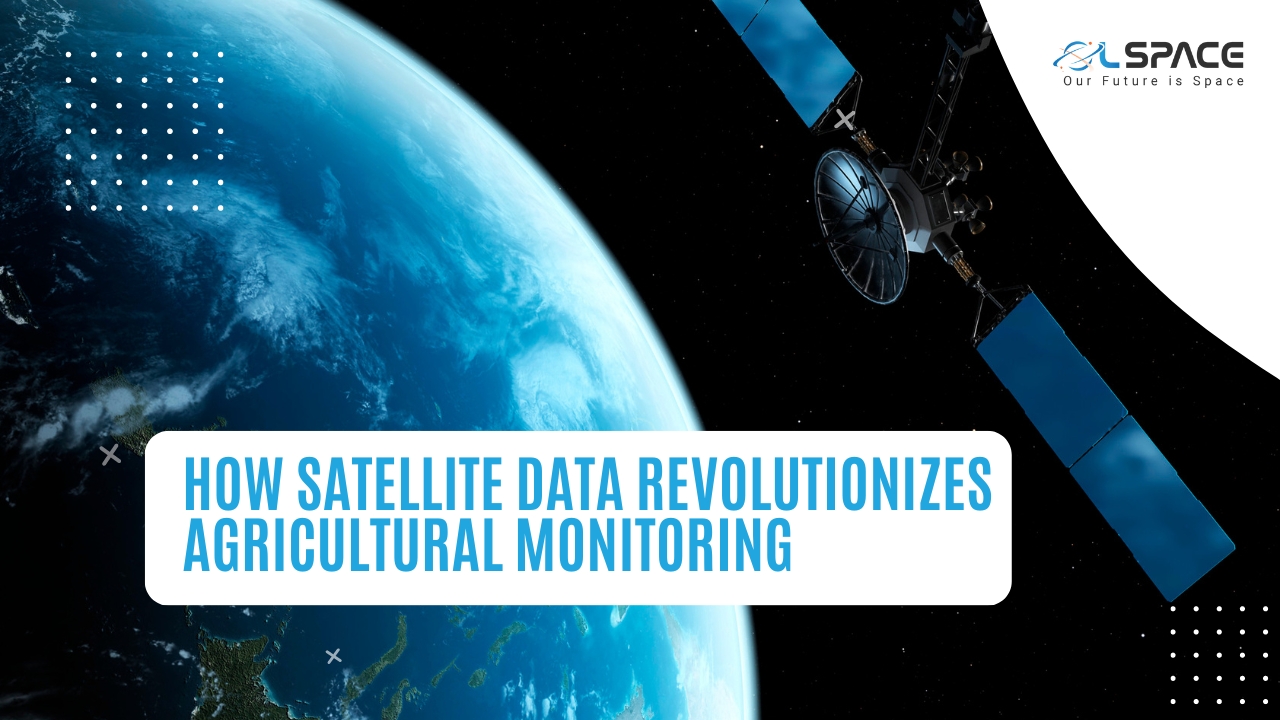24 March 2023
How Satellite Data Revolutionises Agricultural Monitoring

Satellite data has revolutionised the way agricultural monitoring is performed, providing farmers with real-time information about the health and growth of their crops. The use of satellite imagery and remote sensing technology in agriculture has numerous benefits, including improved crop management, increased productivity, and reduced waste. In this article, we’ll explore the ways satellite data is revolutionising agricultural monitoring.
Improved crop management: With the help of satellite imagery, farmers can monitor their crops in real-time and identify any potential issues early on. For example, satellite data can be used to detect drought stress, identify pest and disease outbreaks, and monitor crop growth. This information allows farmers to make informed decisions about how to manage their crops, resulting in improved yields and reduced losses.
Increased productivity: Satellite data can be used to optimise farming practices, such as planting, fertilising, and irrigation. By analysing satellite imagery, farmers can determine the optimal times to plant crops, apply fertiliser, and irrigate their fields. This results in increased productivity and reduced waste, as farmers are able to use resources more efficiently.
Reduced waste: By using satellite data to monitor crop growth and health, farmers can avoid over-applying pesticides, herbicides, and fertilisers. This helps reduce the amount of waste generated by farming operations, improving the overall sustainability of agriculture. Additionally, satellite data can be used to optimise water usage, reducing the amount of water required for irrigation and minimising the impact of agriculture on water resources.
Better use of resources: Satellite data can help farmers make better use of their resources, such as land, water, and fertilisers. For example, satellite imagery can be used to determine the best use for each field, based on its soil type and topography. This information can help farmers make more informed decisions about how to allocate their resources, leading to improved efficiency and reduced waste.
Improved monitoring and evaluation: Satellite data provides a more comprehensive view of agricultural operations, allowing farmers to monitor and evaluate the progress of their crops over time. This information can be used to make informed decisions about future crop production, such as which crops to plant and where to plant them.
In conclusion, satellite data has revolutionised the way agricultural monitoring is performed, providing farmers with real-time information about the health and growth of their crops. The benefits of using satellite data in agriculture include improved crop management, increased productivity, reduced waste, better use of resources, and improved monitoring and evaluation. By leveraging the power of satellite data, farmers can optimise their operations, increase their yields, and minimise their impact on the environment.
